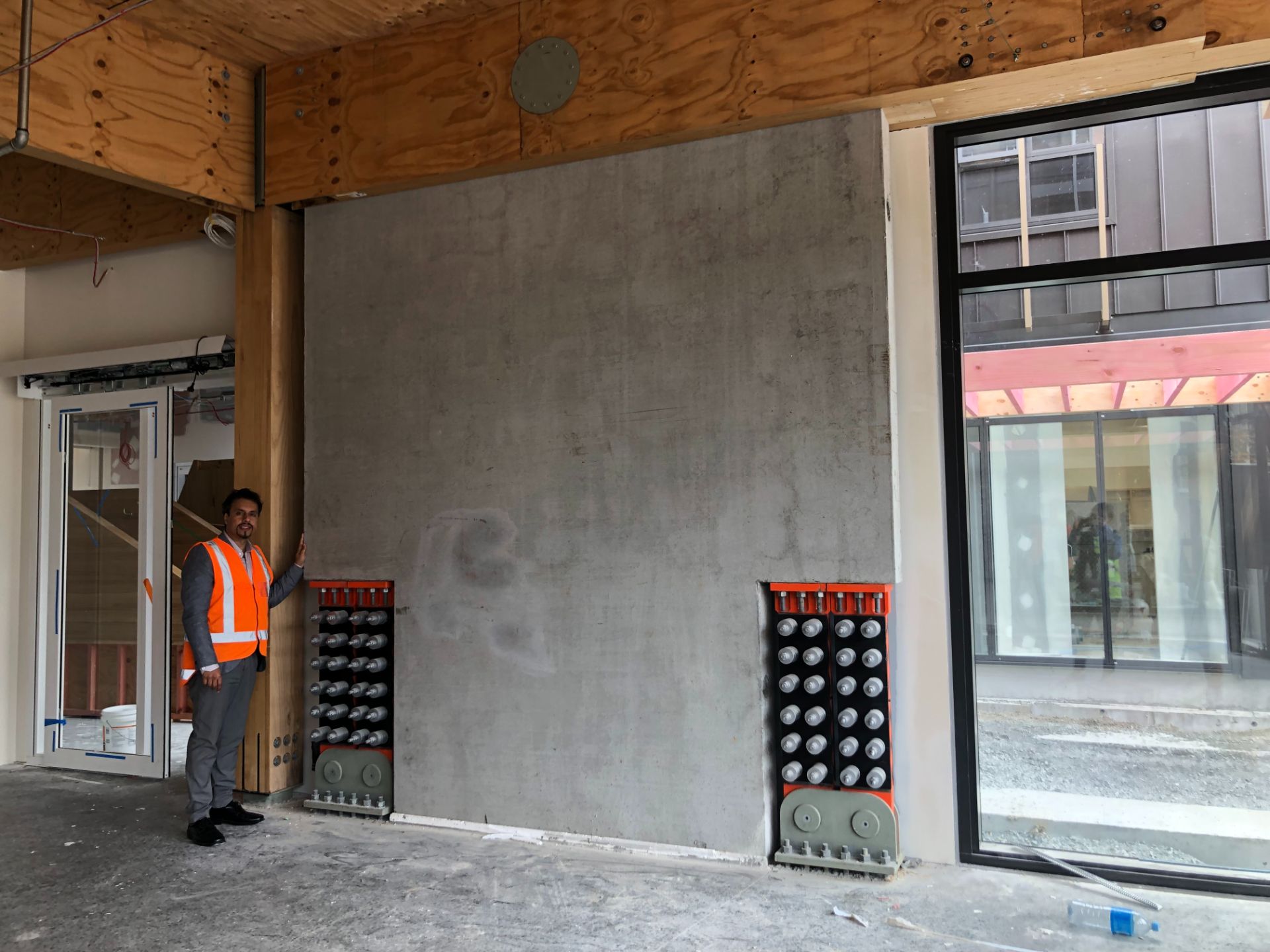
SEISMIC DAMPERS FOR BUILDINGS
Tectonus solutions dampen and self-center all in one, providing continuous protection through aftershocks, and limiting residual drift to below 0.1%. In doing so, building owners and occupiers reduce the risk of injury and death, minimize post-quake damage, and experience less downtime than their peers in a significant seismic event.
Applications
TECTONUS RSFJ
Our original patented self-centering friction damper with energy dissipation and restoring force all-in-one. Enables buildings that recentre themselves, resulting in minimal damage and downtime.
TECTONUS DFFJ
Conventional flat-plate friction damper with high damping (up to 50%) and very high levels of stability and durability. Perfect for projects that require a balance of seismic performance and value.
“We were interested in adopting new technology that would both reduce potential future earthquake damage but also allow the space to be re-occupied much faster than might be the case in a more conventionally designed building.”
Wayne Lawson
Senior Project Manager, Lincoln University
Tectonus RSFJ
The device consists of two outer plates and two center plates with elongated holes. The outer cap plates and the center plates are grooved and clamped together with high-strength bolts and disc springs.- Not steel on steel - a proprietary surface treatment is used
- Bolts only work in tension
- Cap plate can’t “jump” the ridge
- At Fult , disc springs are fully flattened
- Gap allows compression and deformation
- All parts remain elastic up to Fult
- Device returns to “rest” position every time
RSFJ - How it works
When the applied force overcomes the frictional resistance between the sloped bearing surfaces, the center plates start to slide and energy will be dissipated through friction during sliding cycles.The patented shape of the plate ridges and the use of disc springs and high-strength bolts, provides the self-centering behavior. The angle of the grooves is designed such that at the time of unloading, the reversing force induced by the elastically compacted disc springs is larger than the friction force acting between the facing surfaces. That way, the system is recentered upon unloading.
RSFJ - Hysteretic performance
The Tectonus RSFJ’s compact and scalable configuration offers design freedom for any application.
The device is exceptionally scalable and can be implemented in all types of projects involving various materials and configurations. Any flag shape response can be achieved.
The device load deformation is geometrically non-linear and all parts remain within their material elastic range within the design earthquake.
The device provides 10 to 15% hysteretic damping depending on the range of deformation specified. All parts of the device are capacity designed.
With over 20 projects successfully delivered with some of the most innovative structural designers on the planet, we're building a pipeline of projects in USA, Canada, Japan and New Zealand. Perhaps your project will be next?
Nelson, New Zealand
Read MoreVancouver, Canada
Read MoreChristchurch, New Zealand
Read MoreVancouver, Canada
Read MoreChristchurch, New Zealand
Read MoreLower Hutt, New Zealand
Read More